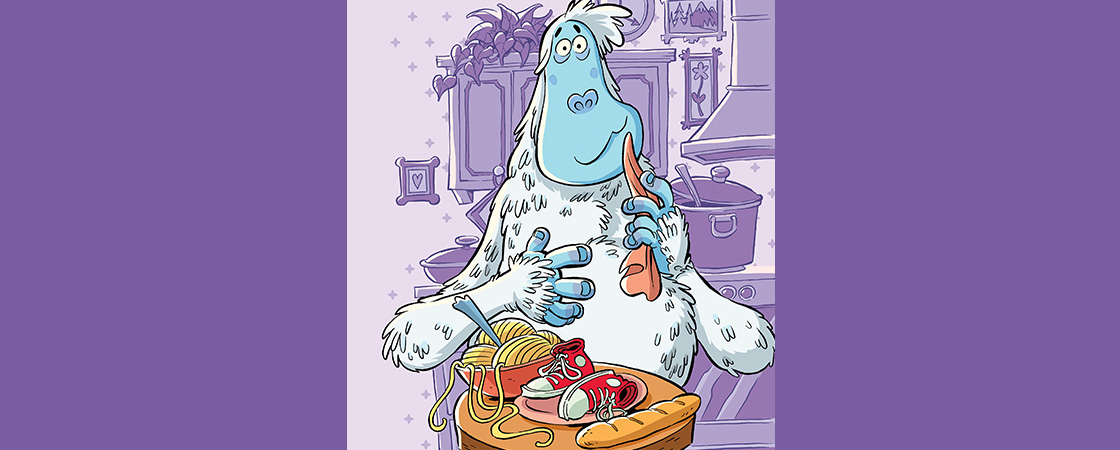Betty met a yeti
in the mountains of Tibet.
She cooked him some spaghetti
and she baked him a baguette.
And when the food was ready
and the dishes all were set,
the yeti swallowed Betty
and said, “Mmmm. The best one yet.”
So that’s the end of Betty,
but you needn’t be upset
unless you meet a yeti
in the mountains of Tibet.
Then just stay calm and steady.
Don’t be nervous. Never fret.
And don’t cook him spaghetti,
or who knows what you might get?

